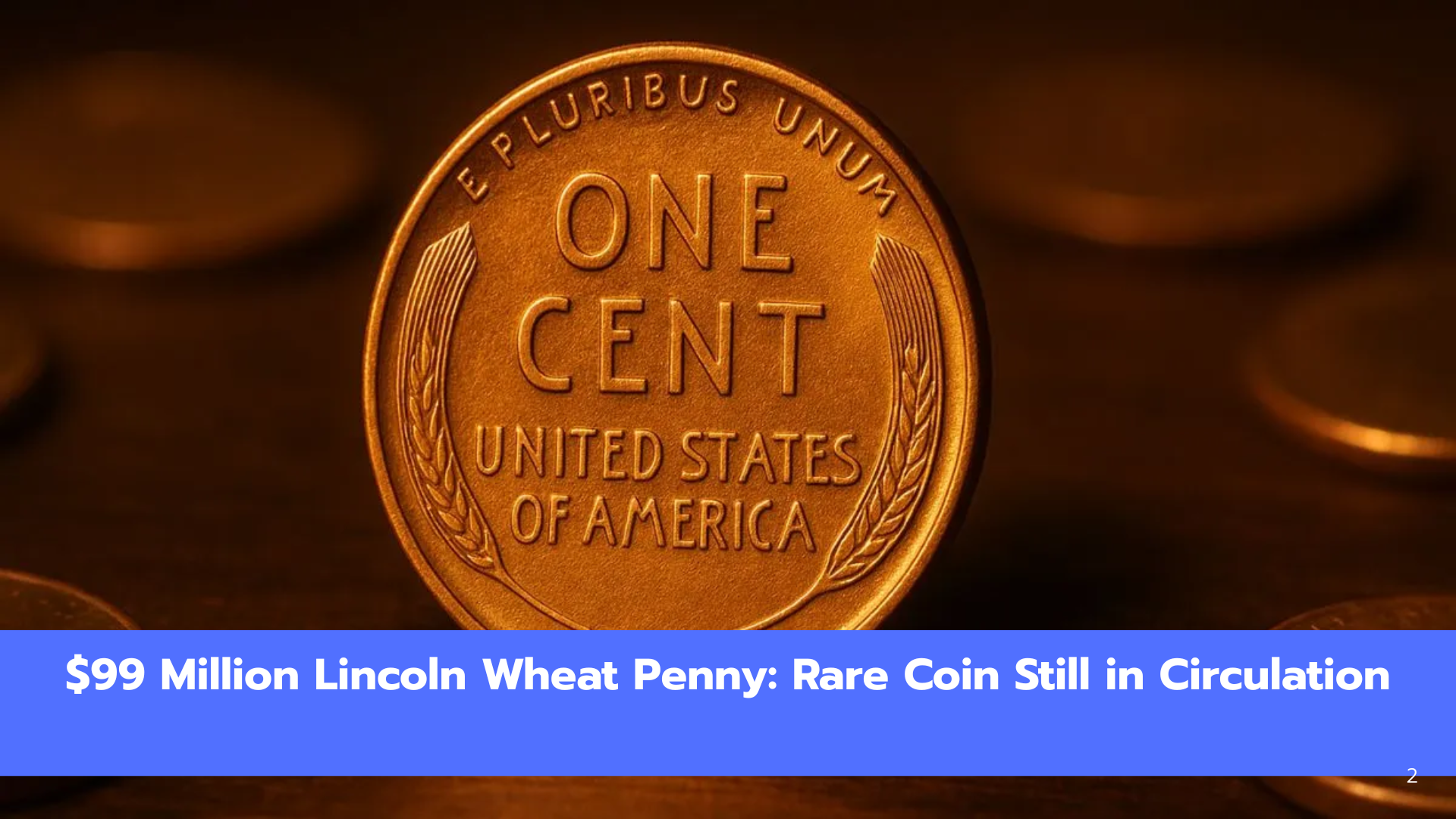Just imagine – the coin lying in your wallet or piggy bank could be worth millions of dollars! Sounds unbelievable, right? But this is exactly the case with the rare Lincoln Wheat Penny, one of which was recently sold for a staggering $99 million in a private auction.
This has created huge excitement among coin collectors and even ordinary people who now check their old coins carefully. Let’s understand why this penny is so special and how you can recognise it.
What is the Lincoln Wheat Penny?
The Lincoln Wheat Penny was produced in the United States from 1909 to 1958. For most of that time, it was a normal copper penny used in everyday transactions.
But during World War II, in the year 1943, the U.S. government needed copper for making military equipment. To save copper, the Mint made pennies from steel coated with zinc instead.
However, a few copper blanks were accidentally left in the machines, and they got stamped as pennies. These mistakes turned out to be extremely rare coins that are now worth millions.
Why is the 1943 Copper Penny So Valuable?
There are several reasons why this coin has such high value:
- Rarity – Experts believe only about 20 genuine coins exist.
- Appearance – Unlike the usual grey-colored steel pennies, the copper ones look brownish-red.
- Historical Importance – They remind us of World War II and the need for copper in the military.
- Collector’s Craze – Coin collectors (numismatists) value such rare mistakes highly.
Recently, in 2024, one of these rare pennies was auctioned for $99 million, proving its incredible demand.
Value Growth Over Time
The value of the 1943 Copper Penny has grown with time:
- 1950s – Sold for just a few dollars.
- 1970s – Price rose into the tens of thousands.
- 2010 – A perfect condition coin with Denver mint mark was sold for $1.7 million.
- 2024 – Record-breaking sale at $99 million.
This shows how collectibles gain value as they become rarer with time.
How to Identify the Rare 1943 Lincoln Wheat Penny
If you think you may have this penny, here are some checks:
- Check the Year – It must clearly say 1943.
- Magnet Test – Steel coins stick to a magnet; copper coins do not.
- Weight Test – A copper penny weighs about 3.11 grams, heavier than steel ones.
- Mint Mark – Look below the year.
- D = Denver Mint
- S = San Francisco Mint
- No mark = Philadelphia Mint
If your coin passes these tests, it could be genuine!
Beware of Fakes
Because of its value, many counterfeit pennies exist. Common tricks include:
- Plating steel coins with copper.
- Altering numbers on other pennies (like changing 1945 to 1943).
- Making modern replicas that look very close to the original.
This is why professional authentication is a must. Services like NGC or PCGS use advanced methods to confirm whether your coin is real.
Final Thoughts
The 1943 Lincoln Wheat Penny is not just a piece of metal; it’s a part of American history. It reminds us of wartime sacrifices and the importance of small details.
So, before ignoring the old coins lying around your house, think again. That one penny could change your life forever – just like the one that sold for $99 million. Truly, the saying “Old is Gold” fits perfectly here.
FAQs
What is the Lincoln Wheat Penny?
It is a U.S. one-cent coin made between 1909 and 1958, featuring wheat stalks on the reverse.
Why is the 1943 penny special?
Because a few were mistakenly made of copper instead of steel during World War II, making them extremely rare.
How much is a 1943 Copper Penny worth today?
Depending on condition, it can be worth millions of dollars. The latest one sold for $99 million.
How can I check if my penny is real?
Do the magnet test, check its weight, confirm the year, and then get it authenticated by professionals.
Where can I sell a rare penny?
You can sell through trusted auction houses or coin grading services like NGC and PCGS.

